#I have a range of 60km
Text
Did a test run of the electric bike with the baby today. Holy hell that was amazing, it was smooth biking and I could get up the hill back home with almost no issue.
The main issue is that the baby leaned forward at some point, probably going down the hill, and go stuck that way against the front of the rain shield. So yeah, need to tighten the shoulder straps so he can't do that. But he enjoyed most of the bike ride, and stopped complaining about the helmet once I started peddling.
#Electric bike#I'll probably be able to commute to work on it#Work is 6km away#I have a range of 60km#And the only hill is where I live so it should be an easy commute#There's a cheap grocery store nearby so I'm going to try that tomorrow
6 notes
·
View notes
Text
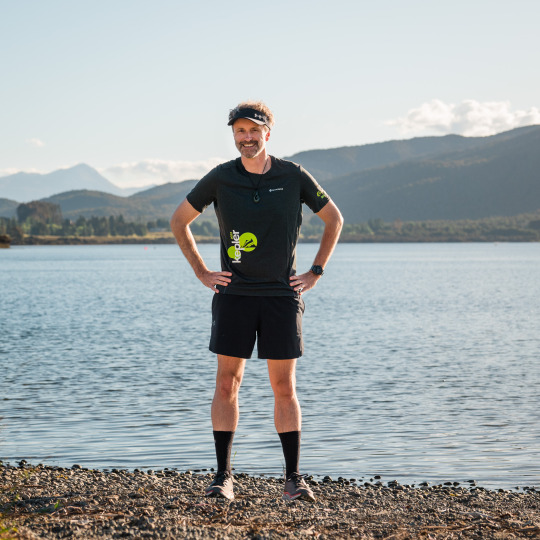
“Running is my vehicle for self-exploration.
I’ve run in some shape since I was a kid, nothing competitive really, just ranging from cross country, local kids running events and track at primary school. From Intermediate and High School, it was more directed towards fitness for football in the winters and tennis in the summers.
However, there was a period in those early teenage years at school where a particular teacher would make our class get sent out for a 3-5km block run for no particular reason. It was, in their eyes, a good excuse to get us focused and fit. In a sense it seemed to be a punishment for some reason. We were required to be back in a set time. If you were late or took too long, you had to either do it again or the next time extra kms would be added on. As a result, this took the fun out of running for me. It was no longer an enjoyable thing to do.
Fast forward to now and so much has changed.
I’ve always tried to keep a reasonable level of fitness and maintain some form of good health over the last decade, whether it was through playing football or tennis or going through spurts of attending a gym. Funnily enough running was not on this list at all. However, I wasn’t getting any younger and injuries from the past came back to haunt me. This resulted in having to face reality and end my competitive and social footballing and tennis days. I became lost. I needed to find something to fill the void that ticked the boxes in a fitness and social interaction sense.
My father-in-law is a runner and he started to get into trail running, something I had never heard of. When I started to research what it encompassed, I thought, ‘No way! Why would someone run up rugged, uneven tracks and basically put themselves through so much pain in running incredibly long races and events?’
Next thing I knew, my amazing wife Katie, signed up to run the Tarawera Ultramarathon 21km in 2020. She was on a journey and I drew inspiration from her taking on this challenge. She graciously let me join her on this journey and together we completed the 21km race at Tarawera. We had a blast. What I did not anticipate was that 10kms into that run I would be hooked! From that moment on the trails and ultramarathons are always calling my name. The rest is history.
A quote I like to use is “you are never too old to dream a new dream”, and with this I had a new dream to run a 50km Ultramarathon. To achieve this, I wanted to go back to where it all started – the Tarawera Ultramarathon. I enlisted the guidance of some experienced running coaches to give me structure and guidance as I had no clue how to train for a distance like this. Despite Covid I was able to achieve this goal in 2021.
Together, Katie and I completed another couple of events, supporting local through the Manawatu Striders. This was fun to do as a couple and at the same time keeping healthy and fit. As a whānau, with our son, we would go to our local parkrun and either walk or run. It was really inspiring to see and meet other runners and whānau who were there too. We made new social connections with other local runners and walkers.
I have been so fortunate and grateful with my most recent challenge and goal in completing the 60km Kepler Challenge. It was an amazing and unforgettable experience and a big tick on my adventure list.
With running, and the trail running community, the people are just fantastic. There are always opportunities to connect with likeminded, passionate people who challenge their mind and body to achieve extraordinary things. These people do things many only dare to dream and it is inspiring and just awesome.
I am someone who tries to give back in everything I do and running is no different. I am fortunate and grateful to now be part of the Achilles New Zealand Manawatū chapter. I have become a guide for our local people with disabilities and will be able to help them participate in events. The work here and the effort these athletes put in is truly inspiring and hugely rewarding.
For me, running, and the trails, is now my happy place. It’s ‘my time’ in escaping the daily grind and hustle and bustle of everyday life. I have nothing but gratitude for being with the whenua, the sights and smells that greet me, the fresh early morning run in the bush as the sun rises, the mist or fog untouched in the hills, the newly formed spiderwebs from the previous night lie in wait. Being present in the moment and emerging out of the trail feeling revitalised, reenergised, and clear-headed sets me up for what lies ahead, ultimately helping my mental wellbeing.
Another reason why I love to run is to challenge myself, set a goal, face all the highs and lows, and then smash it! Three years ago, I started out small with goals that I wanted to achieve and did achieve. This gave me the self-belief and confidence that over time has now given me strength to have bigger goals that give me the drive and determination to go for. Some of these goals are scary to me and that’s okay. I remind myself that I get to be alive, I get to be here, I get to do this, I get to feel my physical weakness and I get to overcome it with my mind. It’s my determination and mental fortitude that gets me through it and to the start line.
My son is one of my biggest motivators. For the majority of my races, he has always brought me home through the finishing shoot. One thing that drives me and pushes me not to quit in a race is the thought in my mind of him standing there waiting for me after being told, ‘Daddy’s nearly here – get ready’. These are priceless memories I’ll cherish forever. As he gets older, I want him to see the determination and drive I have for my training and running, doing the mahi to get the job done. I’ll look forward to the day when he wants to join me, and we run together and me trying to keep up with him.
Running has become a regular part of life for me. I run for fun, I run for the social connectivity, and I run for a purpose as well as for my mental and physical wellbeing. By pushing my limits in the endurance sport world, it challenges and drives me on how far and how high I can go.
For me, It’s always one foot in front of the other. And to go one more.”
Brad @b.rad_and_run
(Palmerston North)
Photo taken in Te Anau
–
Portraits of Runners + their stories
@RunnersNZ
0 notes
Text
D+19 and D+20 update (March 15th-16th)
google docs
Sitrep: Maneuver
Kiev AOO:
Combat continues all along the frontline west and north-west of Kiev itself, right up to the Belorussian border. The recently released video of Ukrainian artillery strikes on (either a command post or forward supply dump) has been geolocated to a point not twenty kilometers south of the Belorussian border, near the town of Poliske, which the UMoD has previously cited as the furthest western extent of Russian advance in that area. Incredibly this truck park and/or command post is scarcely two hundred and thirty meters away from the P02 highway that runs south from Belarus and to the traffic circle crossroads at Ivankiv. That it came under artillery attack indicates the Russians have not been pushing their front line further west to provide more strategic depth. While not pushing as far as Malyn to open up an additional highway is one thing, not at least securing the flank of a main line of communication along its entire length, leaving it open to artillery interdiction... what even the fuck? (PS it’s still burning.)

It seems Bucha is at least contested yet again. This video of apparently abandoned VDV armor has been geolocated to Bucha. The vehicles aren’t damaged, but it taxes imagination to suppose that Russian crews would allow random civilians to videotape their precise locations, given how accurate Ukrainian artillery has proven. Perhaps they’re simply storing the vehicles there, using civilians as human shields against their own countrymen, but I guaran-fucking-tee every tank would have sugar in the gas tank by the time they got back, if the locals didn’t just douse them with gasoline and light them up. Shit, hop in, fire them up, see if the turreted guns work. Russia’s continued inability to decisively hold even the suburbs of Kiev calls into serious doubt their ability to even push into Kiev proper before the heat death of the universe.
This video from a Russian convoy shows the Ivankiv traffic circle is still a graveyard for Russian vehicles. Given recent Ukrainian pushes northward from Kiev up to Demydiv, it’s very conceivable they’ve brought the crossroads into long artillery range (30km, for MLRS.) The distinctive decoration in the middle of the circle is hereby dubbed the “egg of death.” This is at least the third confirmed time that Russian forces have eaten shit in this roundabout.
Evidence of Ukrainian advances west of Makariv – this Russian video of a laser-guided artillery strike on two Ukrainian BMPs has been geolocated to 50.5609492, 29.6365587, 17km north-west of Makariv. Of course, given this is a Russian propaganda release we have no way of knowing the likely date of the video, but local (to me) journalists are reporting persistent rumors of Ukrainian advances this far west on the 16th and it matches previous evidence of recent fighting in Makariv. The Russians released their video on the 15th; scouting on the 15th would have preceded any Ukrainian advance on the 16th.
It was noted there were only a few bridges in the Ivankiv area that allowed passage south past a local river. It seems the Ukrianians were proactive in destroying it as a recently spotted pontoon bridge has been geolocated to near the area (51.03762, 30.12761). Incidentally, if Ukrainian forces can push north from Demydiv to within 12km of Andriyivka, this bridge will be in MLRS range, and if they push to a few km of the city, it’ll be in 152mm range.
Recent evidence of combat in the Chernihiv area – at the village of Yahidne, a highway crossroads/exchange 13km south of the city itself, at Stara Basan, 31km east-northeast of Kiev’s eastern suburb of Brovary and another field fire-damaged about 16km east-northeast of that. These are near Novyi Bykiv, where a brilliant combined-arms DEAD engagement by Ukrainian forces was recently seen (more on this later.) This indicates Russian forces are at least within 152mm range of this town; a solid 60km east of Brovary. They’re either pushing east from Kiev, north from the defensive lines that sprang up to resist the Russian drive from Sumy, or both.
See also this geolocated data of fields 16km northwest of Ivankiv (51.041111, 29.734972) showing vehicle tracks closely correlated with shell craters. This was taken on the 12 so doesn’t necessarily indicate where Ukrainian positions are now, but is further evidence that someone is pretty consistently punishing vehicular movement with accurate artillery fire, and I think we all know who that is at this point.
In general, information from this area is scarce and circumstantial, but given the trends of the last few days it seems Ukrainian counterattacks are steadily pushing the enemy back from Kiev and Chernihiv in multiple directions. At the very least they are actively contesting the areas around the city. Russians are not struggling to break into the city, they’re struggling to keep hold of the staging areas around the city. It is unclear how they can build the momentum to reverse this trend, much less generate the operational momentum required to start fighting into the city proper.
Donbas/South-Eastern AOO
UMoD claims that Russian forces have tried to encircle/bypass Izum and a (relative) wealth of geolocated images of strikes/fighting seems to confirm intense combat in that area:
This artillery strike posted by a Ukrainian artillery unit to their page on a Ukrainian social media site; geolocated to 49.106362, 37.281739. This is seven kilometers south of Izum proper.
This destroyed bridge just west of Drobysheve at 49.0409045, 37.6856864.
This video from yesterday showing a Russian tank hitting an AT mine while trying to advance is from 48.11858, 37.79489 near a highway crossroads just north of the city of Donetsk. Given this area was on the frontline of the Donbas war, the mine might have been placed back then, but the drone observing the incident indicates there’s still active defenders in the area.
This also makes the Tochka-U attack on downtown Dontesk very odd, because if Ukrainians are still defending a line just outside of the city, they could easily shell the rail yard in the city without bringing artillery too close to the front line.
Another Tochka attack was just reported in Dontesk the other day; this one further east, far from any possible legitimate targets, and this one left a crater, indicating the use of a unitary blast-frag warhead. The chances of Ukraine expending such a weapon with no obvious strategic target and having it land (yet again) in the middle of the street is rather suspicious. These may well be false-flag attacks conducted with Belorussian Tochkas.
Not geolocated but reported by multiple good sources: fighting in Rubizhne continues. This was previously reported as lost to Russian forces; that this suburb west-northwest of Severodonetsk is still defended is good news. Rough look at the front line:

Shelling of Kharkiv continues, but no ground assaults reported in the vicinity.
According to UMoD Ukrainian forces are slowly losing ground on the southern defensive line. Taking UMoD at face value, the Finnmap seems accurate here:

Only circumstantial supporting evidence is available but UmoD’s statement that the assault is now directed at the town of Velyka Novosilka makes sense given it’s a crossroads. Between the muddy terrain in southeastern Ukraine and the seeming failure of Russian forces to adequately adapt to conditions, they are very much road-bound; an observation the UK Ministry of Defense has echoed on their official Twitter account. Russia’s advantage in maneuver assets has been reduced even more than I expected by this, perhaps explaining their glacial rate of advance in what is otherwise open terrain that favors their artillery superiority (as well as the limited forces they seem to have committed to this theater.)
It remains to be seen if Ukraine’s forces will fight for every inch in this area to buy as much time as possible, or if they’re holding to buy time for a fallback defensive line to be entrenched. The answer may be both, as in terrain like this, against heavily mechanized forces, defense-in-depth is the favored response.
Russian units are moving deeper into Mariupol proper now. The hospital reported to have been taken is only 5km from the city center, and this widely-circulated video of a “rebel” T-64 getting lit up by multiple RPGs at once geolocates to deeper in the western part of the city (47.098538, 37.523711). This fight is far, far from over however. Russia just deliberately bombed a civilian bomb shelter that had been marked with “CHILDREN” outside of it in the city. Given the nature and quality of the units defending the city, and deliberate, shameless murders like this, I do not expect Mariupol’s defenders to surrender. A fight to the death is likely. Furthermore, Mariupol was the likely main objective of Russia’s direct attack on Ukraine in 2014; as it was the closest major city to the Donbas frontline, and sat on the main highway along the Azov coast to the Crimean peninsula; ergo it was always a mandatory target for both the Russian-puppeered “rebels” and Russian forces proper; as securing a land link to the Crimean peninsula was a major goal of Russia’s eight years of low and high intensity warfare in Ukraine. In other words the city was heavily fortified for almost a decade. These people will fight, and fight like hell. Even if Mariupol falls, the Russians are going to pay a very dear price for it; one they can scarce afford.
Kherson/Mykolaiv AOO
The biggest news is a rare detailed report of the battle of Voznesensk, the town 80km north-west of Mykolaiv along the banks of the Southern Bug river that marks the furthest west known advance of Russian forces. What seemed like a probing attack (to the best of our knowledge at the time) was apparently a brutal two-day battle that saw the Russian BTG committed to the thrust effectively destroyed as a fighting unit. The Wall Street Journal’s in-depth article is a rare in-detail look at ground facts (here is an archive.is link that bypasses their fucking paywall.) This battle reportedly took place on March 2nd and 3rd, the date when their thrust was first noted. It appears that instead of bugging out once they met stiff resistance, they went all-in trying to take the town (and its nuclear power plant) and were simply obliterated. According to the Ukrainian city officials, the Russian BTG left 30 of their 43 AFVs behind when they retreated “fifty miles” (probably to the occupied northern suburb towns of Mykolaiv.) 100ish Russian troops were reported slain; which would account for 1/3rd of a mechanized company (rendering it combat-ineffective) or easily a battalion worth of tank crews.
The entire article is worth a read. It reveals much about how the fighting is preceeding, how Russian troops are comporting themselves in general, and how Ukrainian professional soldiers, reserve militiamen and even civilians and civilian authorities worked together to defeat them. Of especial note: “Russian troops in two Ural trucks were preparing to assemble and set up 120mm mortars on the wheat field, but they got only as far as unloading the ammunition before Ukrainian shelling began.”
(Odd note – it says the municipal swimming pool was hit by a missile strike. The building reported hit in Rubizhne is also a municipal swimming pool. Whether this an extension of the terror strategy or just strikes meant to contaminate a source of relatively clean water in case a siege is required, I cannot say. Either way, Russian forces commitment to outright savage murder is hideous in the extreme.)
The other major story from this AOO is confirmation that the Ukrainians were telling the truth about their two attacks (March 6th and March 15th) on Kherson’s airport and destroying helicopters there. And not just helicopters, but supply trucks and logistical vehicles (much dispersion so revetments such artillery hardening.) Commercial satellite imagery from the 12th shows how the first attack was conducted. Note the red dots marking MLRS rocket impacts, compared to pre-strike commercial SAR imagery of where helicopters were located. To be blunt, those were not MLRS rockets. They were either either incredibly precise shooting by some Ukrainian self-propelled howitzers that did a thunder run down the road from Mykolaiv to get in range... or we have hard evidence of Ukraine’s first confirmed usage of their limited stockpile of guided 300mm MLRS rockets.
Civilian opposition is still strong in occupied Kherson. Russian occupation forces were seen searching for weapons in the city, hinting that low-intensity militia insurgency activities are still underway.
Remember this the next time some asshole tells you that you can’t fight a tank with an AR-15. It’s not tanks searching for small arms, is it?
Yet another example of rear-echelon equipment (in this case, towed guns) being captured by Ukrainian forces near Mykolaiv proper. The guns were limbered for transport and not in their revetments, implying they were abandoned simply because their prime movers (towing trucks) were hit or otherwise nonfunctional – or perhaps a Ukrainian advance came across them before they could hook them up and they fled. It’s odd that they left ammo behind as well, even if it’s only a ready pile near a firing pit. There’s no visible damage to the guns, no attempt to decommission them by shoving a thermite grenade into the breech, so it seems the Russians left in a hurry. Note the terrain; they’re nowhere near even the suburbs of Mykolaiv. It seems the Ukrainians are actively contesting the area.
See also these abandoned IFVs in rural areas, also said to be near the city.
Suffice to say that Russian efforts on the western side of the Dnieper haven’t had much success. Given these developments I think UMoD statements concerning the halting of Russian thrusts northward closer to the west bank of the Dnieper are most likely credible. Even without regular mechanized forces or tank support, one town brought not only halted a BTG, but almost completely destroyed it in detail. I doubt the Russians are having much luck elsewhere given how they are splitting their forces up so much.
That’s the big things. There’s an entire general update to go but I need to sleep for now.
11 notes
·
View notes
Text
"hey nico what time period is GFS set in" yes
it's the 1920s and also the golden age of piracy and also the 90s and also the early 2000s. they have (old) cars & trains & record players & hair dye & the fashion trends are roaring 20s america & it's vaguely sort of russia & my vague, odd little thought is it HAS everything we have now, all of it, smartphones & TVs & internet & computers & nuclear weapons, but it is exceedingly hidden and extremely fucked up. like you must understand not a single person in charge of this world has even a shred of ethics and the governments range from dicatorships to pluto-aristocracies to monarchies to democracies that aren't actually democracies and. like. the people In Charge do whatever they want. they're our world on fucking steroids when it comes to unethical experimentation and creation, it is severely fucked.
so basically i Lied, there is one or two people with morals, and to combat this absolutely terrible shit they put a lockdown on inventing & creating... oh... sixty years prior? seventy? some shit like that. unless you're rich, you don't know what a 'smartphone' is. you don't know what colour tv looks like. you don't know what cars that go more than 60km an hour are. you don't know about internet. you don't know about airplanes. if you ARE rich? you keep it a fucking secret, because who knows what those filthy peasants will do if they get your precious advancements? you're special, and these things are special, you can't let the un-special people get it. (Yes, this is just a way for corporations to sell simply made things to rich people for extremely high prices. a *cheap* smartphone there is about $1000.)
basically this used to be portal fantasy and now it's epic fantasy and when i was trying to go through and make it more epic-y, i got bored and thought 'what if it's still got earth-like stuff, all on it's own, there's just a REAL ACTUAL CONSPIRACY COVERING IT UP' and i never fukkin looked back
ALSO, important addendum, the stuff they have isn't like. perfect 2021-like shit. it's maybe... 2005-2013 type advancement? the era that has Vibes. the era where wired headphones were still loved. the era where cell phones were fucking indestructible blocks. the era where being emo and dressing like a Disney Channel character were both acceptable and cool. that fuckin era. i love that era
8 notes
·
View notes
Video
🆕The Best Electric Mountainbike 2021 In Aruba Top 🆕
Miss Aruba 2021 Helen Hernández presents the new MINMAX ELECTRIC MTB. Up to 40 Km/h, brake discs, fork suspension, Shimano components, display, lights, and up to 60Km range! More than 400 NEW BICYCLES in Aruba. All the spare parts of leading brands in the market. Repair and customization workshop. Expertise and quality spare parts. SHIMANO-KENDA TYRES-SRAM-MAXXIS-ROCK SHOX Take a look at our new bike models for everyone and join our X-TREME days, for professional bikers. Visit the link to learn about The best electric mountainbike 2021 in Aruba, you can click: wwww.trinxaruba.com The video is all about The best electric mountainbike 2021 in Aruba but also try to cover the following subject: -top electric bikes 2021 -electric mountain bike -best electric bikes 2021 - Minmax Electric MTB -Cycling in Aruba - Best electric montainbike - MTB Electric So you want to know more about The best electric mountainbike 2021 in Aruba, I did too and here is the the video I made. The best electric mountainbike 2021 in Aruba intrigued me so I did some research study and created this YouTube video . -------------- Our YouTube channel has various other similar videos regarding top electric bikes 2021, electric mountain bike and best electric bikes 2021 Please check them out: https://www.youtube.com/channel/UCB_OweBVltkCWLaV5y5LIWw?sub_confirmation=1 Now that you have watched my video about The best electric mountainbike 2021 in Aruba has it assisted? Please 'like' the YT video to help other individuals looking for top electric bikes 2021 or electric mountain bike :)
2 notes
·
View notes
Text
What is Love? / Part 12

Short chapter, but I felt like it needed to end there. :)
Hope you enjoy!
---
“Have what in my bag?” You asked, genuinely confused by his remark.
“This.” Minseok spit out the word, his hand moving forward to throw something on the bed.
You stepped forward, looking more closely at the object on the bed. It surprised you, after all this time, to see a needle laying on the bed. The vial had the remains of a yellow residue on the inside and the cap was off the needles end.
“You don’t have anything to say?” Minseok’s face was red with rage and his fists were balled tight, knuckles white from the strain. He grabbed for your wrist, pulling the sleeve of your sweater up roughly. “Did you do it here?”
“What?” You pulled your arm away, “No! No, I didn’t do anything!” You pulled your sleeve back down. “What’s the matter with you!”
“You really expect me to believe that? There’s the evidence right there, ________!” He hit the bed, making the needle jump. “I can’t believe I let you go out with them. I knew that something bad was going to happen.”
“It’s-It’s old!” Your eyes brimmed with tears and you scratched unconsciously at your arm through your sweater. You could feel time moving so slowly around you, specs of dust in the air, the shadows moving on the walls. And you could see Minseok yelling, but you weren’t listening, not really.
“Look at me.” He took a step towards you, “Let me see your eyes.” You stayed staring at the window “Look at me!” His hand came up to your face, his touch gentle despite the reason for him touching you.
The feeling of his fingertips on your chin pulled you from your revery.
“I hate you.” You let the words slide out between your teeth. “Get away from me.”
You didn’t know what you were doing but you were sure that you were not going to stay another moment longer. The door startled you as you closed it, the sound of your footsteps on the old hardwood floors mixing with the memory of the door slamming shut.
Chanyeol came out of the living room, rubbing his eyes as though he had been sleeping as you came down the stairs.
“What’s wrong?” He asked, stepping in front of you.
“Do you have your car keys handy, Chan?” You asked breathily.
“Uh, yea, but-” He stumbled on his words, unsure of what was going on or whether to let you have them.
“It’s okay Chan. I’ll be back. I just need to go out.”
“What time is it?” His voice was groggy, and the question came out as a mumble as he walked towards his backpack, laying open on the floor next to the sofa where he had fallen asleep. He took his keys out of the front pocket, his hands fidgeting around them awkwardly.
“It’s not very late, really.” You pulled the keys away from him gingerly. “Thanks Chanyeol.”
You wasted no time leaving the house, unlocking Chanyeol’s car with the fob. His car smelled like old fast food wrappers and juicy fruit gum. You let yourself sit for just a moment before turning the car on and starting down the winding driveway
In the house Minseok heard the car start and looked out the windows as the car’s high beams turned on. He raced downstairs towards the front door.
“Where’s she going?” He asked Chanyeol, who was standing in the living room looking confused in his sleepy daze.
“I don’t know, man. She didn’t say.”
———
You were raging.
How could he think I would do that? After all of my work to get clean and he just stood there and accused me like that, you thought angrily. Above everything else that bothered you was the look of pure disgust on his face.
You drove fast, headed for the highway, unsure of where you were going exactly. After all, it was around three in the morning. Not much was open outside of the city where the house was.
Your phone rang.
Minseok, you guessed.
You let it go to voicemail.
You quickly came to the realization that you didn’t have anything with you. No clothes, no money, no drivers license. But you didn’t want to turn around, it was like telling him that he had won.
You pressed on the gas, going well over 130km an hour. There was a rush of adrenaline taking over you and you didn’t want it to stop. You couldn’t let it.
———
Minseok ran upstairs, grabbing the keys from the desk and took the stairs back to the front door two at a time.
“Where are you going?”
“I’m going to get her.” Minseok snapped.
“Let her just cool off, Min.” Chanyeol clapped his brother on the back. “I’m sure it will be fine when she comes back.”
“No way. We just had a huge fight and I don’t want her to do something stupid.”
“Well if you think she’s like that then you have bigger problems, man.” Chanyeol’s tone shifted to something much cooler than it had been. He moved to sit on the couch once more, throwing things lazily into his backpack. “I’m going to bed.” As he walked past Minseok, he made no effort to walk around, instead opting for checking Minseok’s arm.
Minseok shook his head angrily, stomping outside and letting the door slam closed behind him. He dialled your number as he got in the car; it rang seven times then went to voicemail.
“________, where are you? Come back right now. I’m sorry. I just freaked out. I don’t want something to happen to you.” He hung up, throwing his phone on the passengers seat.
It shouldn’t be that hard to find you, right? Who else was out there in the middle of the night.
———
Thoughts continued to race through your head, a roller coaster of emotions filling you.
The car beeped and you looked down at the dash to see that you were 60km until the gas tank was empty. You hit the steering wheel, letting out a long, frustrated yell.
Why was this all happening?
You felt like you had been doing so well.
Sure, you went into the club when you said you wouldn’t but that wasn’t that big of a deal.
You slowed the car, pulling over onto the shoulder of the highway.
“I should have just checked the bag.” You muttered, letting your head rest against the steering wheel. You knew you would have to call him eventually but you wanted to wait just a little bit longer before doing so.
You could feel the inside of the car getting brighter and you lifted your head up, looking out the rearview mirror to see two white beams of light coming towards you, and then slowing down, and then stopping, right behind your car.
You pressed the lock button on the door, just to be safe.
“________!” You recognized Minseok’s voice immediately. “Open the door!” He tapped on the glass and you looked towards him, hesitantly.
You compromised by rolling down the window half way.
“What are you doing here?” You asked.
“What are you doing on the side of the road?” He countered.
You let out an agitated huff. “Chanyeol had his car running practically on empty.”
“So…you were just going to sit here all night?”
“I was just waiting before I called because I didn’t-don’t- want to see you.” You crossed your arms, partially in defiance, and partially because you were cold.
“Just get in my car.” He was already calling one of his brothers. “Hey, I know it’s late…” Minseok turned away from you, walking up the side of the road.
You sat for another moment in Chanyeol’s car, taking deep breaths before getting out. Standing next to the locked passenger’s side door of Minseok’s car, you waited for him to turn around and notice that you were freezing.
The moon looked like almost a perfect circle in the sky. The full moon was coming, you had forgotten.
Maybe that’s why Minseok reacted the way he did.
You watched Minseok hang the phone up and slip it into his back pocket of his sweatpants. He stood on the edge of the road, so still, the headlights so bright you knew that he couldn’t possibly see you, even though it felt like his eyes were burning right through you.
After a couple minutes he started to walk towards the car, getting in smoothly and shutting the door more forcefully than he really had to. There was nothing to say, so you didn’t say anything, instead, you turned your head to look out the window, head resting on the cool glass. You kept your arms folded over your chest to ward off the cold.
Eventually another set of headlights pierced the night and Minseok started the car, doing a fast u-turn to head back towards the house.
“Who was that?” Your voice barely came out in a whisper.
“Junmyeon.”
You let out a huff of air.
“He was up anyways. Everyone is up.” It sounded like he was blaming you for that.
“Maybe if you hadn’t yelled at me they wouldn’t be.” You scoffed.
“Don’t blame me.” Minseok glanced between the road and you.
“Well, you started it.” He started to talk but you raised your hand. “You went through my bag and found it and jumped to some stupid conclusion. You didn’t even let me explain or anything.” You were starting to get riled up. “Jesus, it’s like you’re pms-ing or something.”
“Is that what you think?”
“Well the full moon is coming up, like tomorrow, and you’re being super irrational right now.”
“You’re really pulling that line on me? Don’t girls hate when guys do that?”
You started to laugh. Uncontrollably.
“Yea…yea we do.” You took a deep breath to calm your laughter. “Fuck…I’m tired.”
“Me too.” Minseok reached over, his hand resting on your knee. “I’m sorry.”
“I know.” You let your head fall back against the headrest. The feeling of Minseok’s hand on your leg warmed you. A sense of comfort washing over you and pushing all of the other feelings out of the way.
The car was in the driveway now. Minseok drove smoothly towards the house. Swinging back into his parking spot. You unclipped your seatbelt, letting it fall away from your shoulder and back against the wall of the car.
“I hate this whole mating thing, you know. I mean, I can’t stay mad at you about anything.” You couldn’t help the smile that tugged at the corner of your lips and you started to open the door, turning away from Minseok, but he caught your arm, pulling you back to face him.
“Yea,” He said, his hand sliding up to your cheek, his face mere inches from yours. “It really sucks knowing that you’ve found the person you would do anything for.” He bridged the gap between the two of you, his lips moving firmly against yours, his tongue sliding, hot, into your mouth.
“Tongue already?” You muttered, pulling away slightly. “You think you’re back in my good graces that easily?”
“Just shut up and kiss me already.”
As you kissed Minseok you could feel your body tingling from his kiss. But the part you could feel the most was on your left foot between your toes where you shot up earlier that night.
#exo#exo as wolves#exo as wolves au#alternate universe#exo alternate universe#wolf xiumin#wolf minseok#minseok#xiumin#chenyeol#kai#jongin#chen#jongdae#d.o#kyungsoo#lay#yixing#sehun#baekhyun#junmyeon#suho
10 notes
·
View notes
Text
Best Places to go to in Australia

Girls
Australia contains a myriad of natural wonders, which implies that the adventuresome traveller are going to be spoiled for choice; this country within the hemisphere has one thing for everybody. Of course, you wish to understand that places of Australia to go to throughout your trip and to search out the most effective cities, national parks, islands et al regions that Australia needs to provide. i am pretty certain everybody desires to go to Australia a minimum of once in their lifespan and you must too considering however jam-packed with beauty and natural surprise it's.
Girls
Australian Culture:
Much of Australia's culture comes from European roots. Australia could be a product of a novel mix of established traditions and new influences from western European culture, once warfare II there was serious migration from Europe. these days Australia conjointly defines itself by its Aboriginal heritage, spirited mixture of cultures and existence of democratic.
Unique Australian Animals:
Australia teems with completely different species of animals, several that ar found solely in Australia. This cluster includes Kangaroos, Koalas, Australian state wolves, wallabies, wombats, and plenty of others. The marsupial is exclusive to Australia, it is a from the family Macropodidae that mean 'large foot' it's giant hind legs, a powerful tail, little forelegs, and long ears. Kangaroos board Australia, Tasmania, New Guinea, and New Seeland. The Phascolarctos cinereus it's generally cited Australian kangaroo bear, but they're not a bear. The phalanger is found in coastal regions of japanese and southern Australia. The opossum prefers to maneuver around neither in daylight or night, however rather simply when sunset, as eightieth of its time is spent sleeping.
Climate of Australia:
Australia may be a continent that experiences a range of climates because of its size. consequently, the northern Australia enjoys a tropical climate, and southern Australia a temperate one. The weather will vary from below zero temperatures within the Snowy Mountains to intolerable heat within the north-west. In several components of the country, seasonal high and lows will be nice with temperatures starting from higher than fifty ° Anders Celsius to well below zero.
Great coral reef, Fraser Island, the nice Ocean Road area unit some of the places we are going to explore on this journey to Australia. Australia is that the excellent destination for you, relish our recommendations.
10. Gold Coast Introduction: one amongst the key tourer destinations to go to in Australia is that the Gold Coast additionally the foremost inhabited noncapital town in Australia placed in South East Queensland, 94km south of the city state capital., There square measure variety of exciting rides and variety of diversion avenues. With a population close to 540,000 in 2010 year. With scoop temperature twenty five.1 °C (77 °F) and min temperature one7.2 °C (63 °F).
9. Kakadu park Introduction: Kakadu parkland (name 'Kakadu' is from Gagudjuan, associate Aboriginal plain language) could be a living cultural landscape and also the largest park in Australia covering a district of four,894,000 acres, set among the Alligator Rivers Region of the territory of Australia. The parkland Kakadu is home to sixty eight mammals, over a hundred and twenty reptiles, 26 frogs, quite a pair of,000 plants and over ten,000 species of insects, the park is good of these want to grasp additional concerning Aboriginal culture. you'll be able to drive in yourself except for the alligator reason it is best to require a tour!
8. Broome Introduction: Broome ancient lands of the Yawuru folks may be a holidaymaker city in Australia 2389km north of Perth, a 2 and a 0.5 hour flight from state capital. Broome is Associate in Nursing oasis of colorize the outback and place to relax, broome is presumably the foremost reposeful place I actually have ever been, time simply appears to disappear here. Broome encompasses a tropical climate, season in Broome is late could to early Sept once temperature could be a balmy thirty °C.
7. pouched mammal Island Introduction: marsupial is third largest island once Tasmania and Herman Melville in Australia however pouched mammal has a lot of to supply. it's the simplest places to go to in Australia with children. as a result of marsupial is sort of a zoological garden with rare birds and lots of kangaroos and koalas the ocean is abundant with fish and ocean lions. The wine is pretty smart too for you. Visit pouched mammal Island. you will see why it is a commercial enterprise icon.
6. the good Ocean Road Introduction: the nice Ocean Road one in every of the world's most haunting coastal drives situated at AN hours drive from Melbourne. the wonder of this road is consists of Australia's signature stone rock formations, like the far-famed '12 Apostles' it's fancy doing it by automotive. Road may be a 243km stretch of road on the south jap coast of Australia between the Victorian cities of Torquay and Warrnambool. Best time to travel, most likely spring and season once the scenery is at its best.
5. Barossa Introduction: Barossa is one among the foremost wine (red wine in particular) manufacturing regions of Australian state. If you significantly ar a oenophilist, then Barossa is correct place to go to. Barossa depression is created by the North Para River, being solely 60km northeast of state capital, the southern finish of the vale is simply regarding one hour's drive from town. There area unit over fifty wineries within the region and 390 hectares of flora & fauna.
4. Uluru Introduction: Uluru should be one in all the most effective best-known sights of Australia and one amongst the world's greatest natural wonders! For a style of aboriginal culture and history, create your thanks to Uluru. previous name of Uluru is Ayers Rock. Uluru could be a massive stone rock formation within the southern a part of the territorial dominion in central Australia. the simplest time to go to is Gregorian calendar month, August and Gregorian calendar month.
3. Fraser Island Introduction: Fraser Island is that the biggest sand island in world spreads across 1840 km². In fact, Fraser Island is that the solely place within the world wherever forest square measure found growing on sand. settled on the southern coast of Australian state, Australia. Bird lovers are in paradise as Fraser Island is home to over three hundred species of bird. one in every of the most effective things to try and do is rent your own automobile and explore the island at your leisure conjointly do not miss the illustrious clear Champagne Pool.
2. state capital Harbour Introduction: Sydney Harbour Bridge is nicknamed "The Coathanger" is often said because the most stunning natural harbour within the world location within the initial European settlement in Australia and 134 meters on top of the ocean level. 2 hundredth of the population of state capital will see the bridge a minimum of once every day. The best time of year to visit is New Year. Whilst you can drive across the bridge, there is a toll so beware!
1 note
·
View note
Text
Renting A Scooter In Bali

If you're feeling confident to tackle the traffic, then the best way to get about as a solo traveler is to rent a scooter in Bali.
Price
You can rent scooters pretty much everywhere you go, pricing ranges from 70,000 Rp/day down to 30,000 Rp/day depending on how long you rent it for and the size of the scooter. 110cc scooters are fine if you are travelling alone and for shorter distances, but for extra power, a longer and smoother ride, or if you end up taking a friend for a ride, I highly recommend a 125cc scooter. Pricing for 125cc are a little bit more per day, maybe an extra 10,000Rp/day.
Be in control and be confident.
If you've never ridden a scooter before, the #1 thing to remember (apart from balance) is that it's all in the right hand and the throttle.
Know the throttle reaction for that scooter.
Every scooter has a different sensitivity in the throttle. It's essentially the same as the accelerator for a car, but much more sensitive. If you have complete control of the throttle, then you will have complete control of the scooter.
Know the brakes !
It's very important to test the brakes of a scooter BEFORE hiring it. Just like a bicycle, if you feel that the brakes are too loose, or soft, and it's not braking hard enough, then you need to make sure that the person you are hiring off will make adjustments for you. Also, when you brake, always apply even pressure to BOTH brakes, and not just one. If you end up slamming on only the front brake, the scooter could end up slipping away underneath you.
Fuel

Pertamina is the main Fuel Station you'll find on major roads
The best place to fuel up is at the major petrol stations along the main streets. It's cheaper, and you also know the fuel is clean.
There are 2 types of fuel, from the 3 companies you'll find, that you want to fill up with:
Pertamina: Pertamax or Pertamax Plus (I fill up with Pertamax Plus as much as possible for cleaner, better mileage fuel)
Shell: Super 92 or Super Extra 95
Petronas: Primax 92 or Primax 95
Line up behind all the other scooters and have your bike turned off, seat open, and fuel cap off, ready for when the attendant fuels you up. Just say "full" to the attendant, and have your money ready. To fill up a 125cc from empty will cost around 35,000Rp, and around 15,000-20,000Rp for a 110cc.
You can also get fuel from shops on the side of the road (you'll see fuel in Vodka / Spirits bottles for 10,000Rp/L) but sometimes the fuel has been sitting there for a long time and the bike can splutter and cough a bit from old, dirty fuel. Only use these fuels when you really need to.
I would never ride a scooter in Europe / US / Australia, but I will always ride one in Bali.
Road Rules
It looks like a crazy free-for-all system on the roads in Bali, but the more you become a part of it, the more you'll realize that there is some order to this chaos. I, for one, would never ride a scooter in Europe / US / Australia, but I will always ride one in Bali.
Why ? Because you will start to notice that there is a flow to the style of driving. There are no fast, erratic maneuvers by the other drivers. Everything is slow and steady. No fast lane changes, no fast right or left turns. All slow, slow, slow.
And another reason, I just trust the Balinese drivers around me, as opposed to where I am from.
The person in front always has right of way
Same with the speed. Apart from the double lane highway going from Kuta over to the East Coast (towards Candidasa), the speed of traffic is relatively slow compared to Europe / US / Australia. You'll be lucky to hit 60km/h on the main roads. Most traffic sits between 30 and 50 km/h which means you can easily stop quickly if a dog / chicken / cat runs onto the road, or if you need to avoid a pothole or two.
The main thing to remember though, is that the person in front always has right of way. That is why you see people blindly turning left onto a main road without stopping or waiting for traffic to go past. They have right of way, and if you are approaching them, you must slow down to give way / avoid them.
Your Luggage
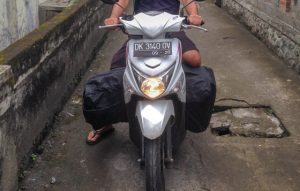
Carrying Your Luggage On A Scooter
Make sure that you are travelling with a backpack or small suitcase that is small enough to fit at your feet as I DO NOT RECOMMEND wearing a heavy backpack, or strapping your suitcase on the back seat when riding a scooter. If you have a large 65L+ Backpack, then you can turn it sideways and fit it across the scooter at your feet. Check that your pack fits in the space between the seat and the handlebars when you are choosing your bike.
Rain
If you're going to be doing a lot of travelling by scooter, then I highly recommend buying a plastic rain coat. You can buy these in almost all Mini-Mart's / Kiosks for up to 100,000Rp, or you can get them from street clothing stalls for around 50,000 to 70,000Rp, depending on your bartering skills.
Rain in Bali can come down pretty hard, fast, without warning, and being wet on the scooter is not the best experience. The temperature can really drop when you are doing 40-50km/h in wet clothes.
Just buy a rain coat and leave it under your seat in the helmet storage compartment of the scooter.
Renting A Scooter In Bali
Follow my blog with Bloglovin
Read the full article
#CanYouRentAScooterInBali#RentAScooterInBaliPrice#RentingAScooterInBali#ScooterRentalBali#Bali#Indonesia
1 note
·
View note
Text
4 April - El Valle del Elqui


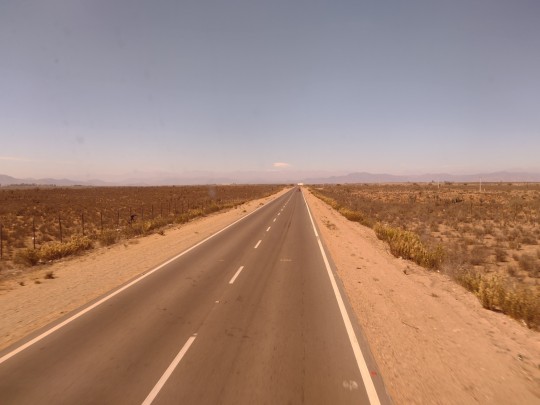
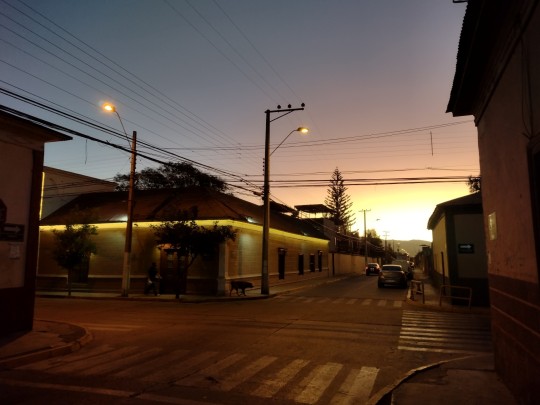


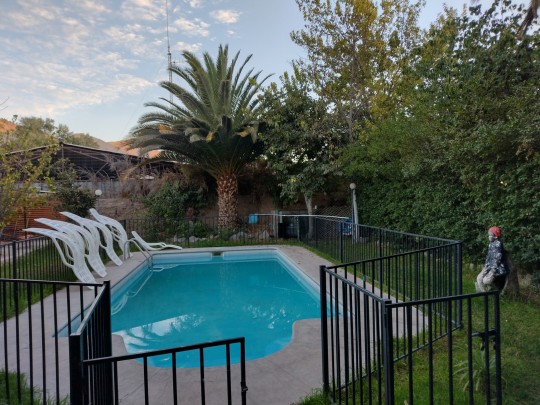

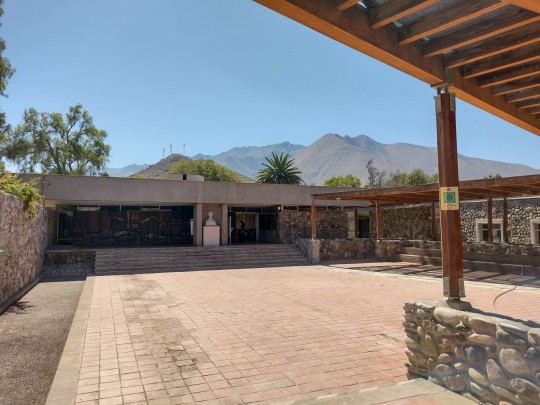
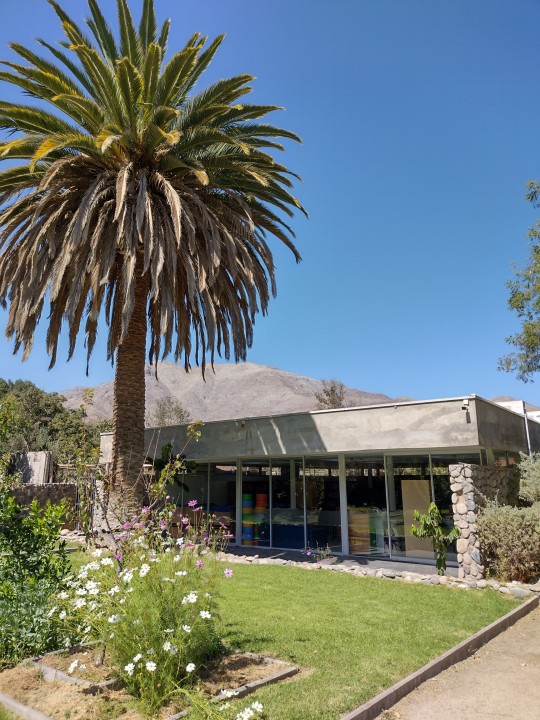
It was an early start on Monday morning for Daniela and Sofia preparing for another week of work, while I was packing (relatively) light for my journey of around 600km north to the small town of Vicuña in the Elqui Valley, my final destination of this trip. I was initially in touch with the very friendly Adeline of the Elki Magic tour agency back in autumn 2021 to seek advice, ahead of the arrival of Omicron, on the current ease of travel and tourism in Chile. Over six months later, I was finally heading to Elqui Valley, known particularly for one of the clearest night skies in the world, and the production of pisco.
I head back to the coach Terminal San Borja; the area felt far less intimidating during Monday morning. The journey along the Ruta 5 Pan-American Highway passes through plenty of parched scrubby land, occasionally skirts the impressive breakers of the Pacific, and carves through a few mountain ranges. We were overtaken at one point by a coach proudly displaying to all drivers its speed on the rear, but showing that it was exceeding the 90kph limit for coaches. While writing this on the return trip to Santiago I see that we're traveling at 110kph: I'm not convinced that the speedometers on public display have any impact on safe driving!
We pulled into the La Serena coach terminal at around 4pm and I enquired about the next bus to Vicuña, around 60km away. I was to learn that due to a problem with a vehicle there were no more departures that day, and no other companies providing the service. Instead I was advised to walk into the city centre to take one of the colectivos (shared taxi). This seemed strange since I had understood from the hotel that there was a bus around every 30 mins and two companies operating. Judging by the number of buses we passed on the road to Vicuña, I guess the colectivos I was directed to are operated by the bus company I spoke to!
Arriving at the street I'd understood that I needed to wait on, a lad advised me that I needed to look out for a yellow colectivo. After 15 mins of several passing by (but to other destinations) I enquired again and was on the wrong street! I found the departure point on the parallel street, established the vague queuing system, and soon I was off. The elderly gentleman I was sat next to made me smile very much when the silence was broken by the Pet Shop Boys's Go West ringtone of his incoming call.
An hour later, after skirting the depleted Embalse Puclaro reservoir, we pulled into pretty looking Vicuña, surrounded by sun parched mountains, which along with the sky, were of a spectacular colour as the sun was setting.
I checked into Hotel Halley, just two blocks from the Plaza de Armas. The hotel was my bargain find (well, by Sofia) of my trip, £9 a night for an ensuite double room with breakfast! The hotel also came with a small pool! An Airbnb offer meant it was a third of the usual price, and nearly half of what I'd been regularly paying for a bed in a dorm room without breakfast. I would miss out on the social atmosphere of a hostel but happy for a little luxury to round off my trip.
After checking in I head to the office of Elki Magic and finally met Adeline in person. Adeline, originally from France, established over 10 years ago with her partner Lincoln (who she met when in the town on her travels), the first tour agency in Vicuña. As during my phone conversations, she was just as helpful and patient with my queries about how to spend my three days in the Elqui Valley, once I'd given her a rundown on my two months down south! While in the office, Adeline calmly noted that we were experiencing an earthquake, the first I had felt here. Later that evening I discovered that it was a 4.2 magnitude centred on the nearby coast. I later learnt that the locals are not concerned by anything under magnitude 6. I also awoke to a mild tremor in my room one night. While tremors are frequent here, they generally are never as powerful as those south of Santiago.
Vicuña is the birthplace of the (first Latin American) Nobel Prize winning (in 1945) poet, Gabriela Mistral. Along with astronomy and pisco, the town and surrounding area makes good use of her name for branding, and the street on which the museum devoted to her is located was renamed in her honour. She certainly deserves the accreditation though; a humanist and educator, she spent her years teaching in local towns and cities across the country, devoting her life to improving the education of children and women. She later lived in a number of overseas countries where she sought to improve the education system, and was a diplomat representing Latin American culture, before settling in New York, where she passed away in 1957. She was a close friend of the fellow poet Pablo Neruda.
I sampled a fascinating new (open two weeks!) addition to the town, the Universo Elqui exhibition. Developed by a keen astrologist with some local university funding, Rodrigo gave us a guided tour of several rooms detailing the history of observatories in the valley (some of which are owned by NASA, with a new one currently under construction), the Big Bang and creation of stars and the universe, and the process and impacts of climate change. It was rounded off with a complimentary bottle of beer brewed on the premises.
The first evening I walked up to the Cerro de la Virgen lookout to check out the changing colours of the surrounding landscape as the sun set for the day. At the lookout was a local who runs there every other day, and advised me that I had 30 mins more light. I took what I had understood to be a shorter and easier route back into town, but got a little lost as the darkness set in! My maps app and the torchlight came in very handy.
The following morning I head back to the Elki Magic office and met four fellow travelers joining me for a 55km (mainly) downhill cycle ride from Alcohuaz, nearly 2,000m above sea level in the Elqui Valley, back to Vicuña at 600m. Along the Circuito Gabriela Mistral on the Ruta de las Estrellas (Route of the Stars) we passed through Pisco Elqui (renamed to put it on the tourist trail) and Montegrande, where Gabriela spent her childhood, which is also now her resting place. During a sunny 30C day complemented with a gusty warm wind from the Andes, we passed alongside the arid mountains with patches of green in the valley bottoms where vegetation sits, including the grapes grown for pisco. There were also some avocado plantations clinging to a mountainside.
We stopped off at the small artesanal Dona Josefa pisquera for a free sample and tour, where I purchased a couple of small bottles to share with friends back in Santiago. Bottles for myself would have to wait until duty free since I'm traveling with hand luggage only. In spite of it mainly being a descent, the heat, lack of shade, and gusty headwind, did make it hard going. I did though manage to cool down a little by lying in the gentle and shallow waters of the Rio Claro (Clear River), in a zone of some natural pools. We all chose to bypass the vineyard tour and save ourselves for the Guayacán craft brewery towards the end of the ride, where we were relieved to take a break from the saddle, heat and wind, to enjoy a variety of samples, one of which included the ingredient 'Nottingham yeast' no less! The beers boosted the energy supply for the final 30 minutes along the direct (but busy) road back into Vicuña as the blindingly bright sun was setting behind the mountains beyond the town.
The third and final day, after some gentle breaststroke (I wasn't convinced by the pool water quality for submerging my head!), was a lazy one, returning to enjoy some good coffee I'd found on the plaza, returning to a top notch cheap veggie café, searching for the obligatory fridge magnets, failing to find postcards of the town/valley, and having a good conversation in English with Filipe, the guy working in the tourist office, who happens to also brew beer! I returned later in the day to buy a pack of his Jarropato variety to also enjoy back in Santiago with friends.
Last, but certainly not least, I finished my stay with an evening visit to the Pangue Observatory, 17km out of town at 1,900m, and owned by a very eccentric French guy Eric, who's lived in the town for many years. With his website on which it's impossible to find the booking or contact details, and his old skool (or maybe hipster?) Nokia brick mobile, he's quite a character! His tour had been recommended as an alternative to the better known (and more mass tourism) Mamalluca or other options.
There were just three of us for the tour; I was joined by a couple from Viña del Mar. With a second astronomer, our car climbed the sandy and stony roads surrounded by mountains with a stunning glow, as the sunlight disappeared. The moon (a few days after new moon) shone above Vicuña. Traveling through the cactus filled dusty arid landscape, it really did feel like we'd entered another planet. The most recent rainfall was last year, when a whole 6mm fell. During the past five years the area has received a total of around 50mm, less than 10% of the historic annual average of 150mm.
We passed through a couple of locked gates to access Eric's observatory, then admired the silhouette of surrounding mountains (some of which host NASA telescopes) as the final colours of sunset faded. The show itself was spectacular, including looking at the sky with the naked eye, where there is no Plough or equivalent of the North Star to be found. Sailors had a tougher job of negotiating the southern oceans! But we could clearly see the brightest star (Sirius) in the universe and the nebula cloud of the Large Magellanic Galaxy. Through the telescope, we got to see the various shades of the gas clouds according to density, different coloured stars according to age, the Acrux twin stars, the Eta Carinae star which is causing some excitement as a supernova is expected 'soon', and of course the detail of the moon, where the pin prick looking impact craters are at least 5km in diameter, increasing to up to over 200km. Being rather ignorant of the universe surrounding us, I got to learn plenty during the evening, and was probably asking too many silly questions! The evening was a very special way to end my second Chilean adventure, other than a half weekend back in Santiago.
1 note
·
View note
Text
My Cycling Journal - Aug 2021
Started this month by completed my 100th consecutive days of cycling from 29th Apr 2021 – 6th Aug 2021. By end of 31st Aug 2021, I have done 125 consecutive days of cycling as well as fourth consecutive months of riding over 1000km with furthest distance of 1,274.07km in this month.
On top of that, I managed to break my speed barrier of average 30kmh with the highest average of 33.7kmh over 12km on 3rd Aug 2021 as well as averaging 30kmh over 100km on 28th Aug 2021. Stats show that I am getting faster with lower average of cadence, which ranging from 27-74rpm on this month. The changes of equipment helped to increase the speed as I replaced my helmet to Aero helmet Met Manta MIPS as well as replacing my front light to Moon Mizar and rear light to Giant Numen Aero Plus TL, which reduces at least 162.2gr in total. Broke most of the other records with the list of highest average speed is as follows:
10km: 30.2kmh on 6 Aug 2021
12km: 33.7kmh on 3 Aug 2021
20km: 29.9kmh on 7 Aug 2021
25km: 33.3kmh on 3 Aug 2021
30km: 29.0kmh on 20 Jul 2021
40km: 29.9kmh on 28 Aug 2021
48km: 30.3kmh on 28 Aug 2021
50km: 28.2kmh on 2 Aug 2021
60km: 30.3kmh on 28 Aug 2021
66km: 30.1kmh on 28 Aug 2021
70km: 28.0kmh on 7 Aug 2021
78km: 30.0kmh on 28 Aug 2021
80km: 28.1kmh on 7 Aug 2021
90km: 30.3kmh on 28 Aug 2021
100km: 30.0kmh on 28 Aug 2021
106km: 29.77kmh on 28 Aug 2021
110km: 27.7kmh on 24 Jul 2021
120km: 27.7kmh on 24 Jul 2021
130km: 27.7kmh on 24 Jul 2021
140km: 27.6kmh on 24 Jul 2021
150km: 27.2kmh on 24 Jul 2021
In term of my weight, I must start increasing my weight by gaining muscle as my weight is well around 60kg for entire month with the lowest hitting 57kg. Next month going to be existing month as I will join 200km Audax 2021 for its 100th anniversary, which needs to be completed by 13.5 hours. It going to happen on 11-12 Sep 2021 hence will have to start training my endurance.



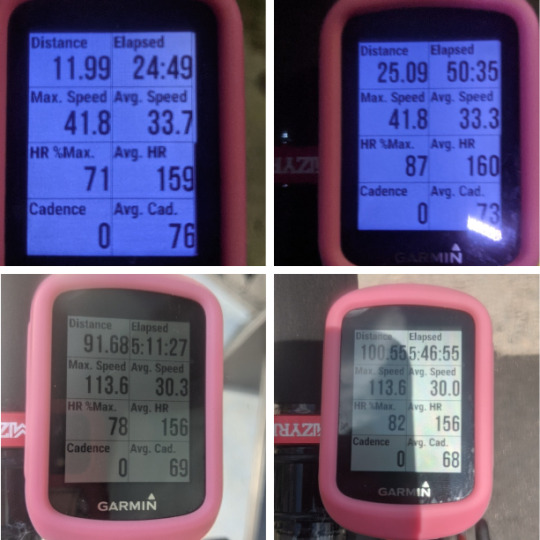
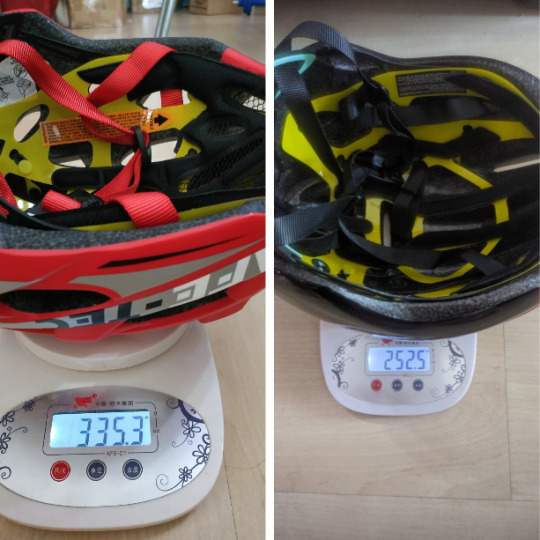


0 notes
Text

Knitvember day seven, got a decent amount done. Baby had a good, long nap late this morning. Unfortunately he complained and wanted a nap at 4 too, and so I let him. He didn't go to bed until 9, he's usually asleep by 8 at the latest. No more naps after 4 is now the new rule.
Tomorrow I'm going to load him onto the bike and go about two kms or so. I'm just getting back into shape. I found out that I have a range of 60km on my bike, so that's awesome.
#Knitvember#Don't want to accidentally cramp up my muscles by doing too much again#I also need to raise the seat on my bike#Because it's for short people of course
4 notes
·
View notes
Photo

Went for a ride around the Sunshine Coast. A mistake was to have a coffee at the start which didn’t sit well and sapped my energy as I was getting my legs during the climb which started out the door from Landsbrough. A long non-stop grind in my lowest gear, not much faster than a walking pace. And there at the top, was coffee to be had if I wanted, which would have been a much better idea than the previous one. Still a climb later but some reprieve at least. After stopping for a few hours and lunch with a friend I travelled along the range with its rolling hills and speeds from mid 60km/hr to 8km/hr eventually to Montville. Then down a narrow, rough, winding and steep decent. No hero behaviour here. I took my time not allowing the bike to run away. Then onto Palmwoods more rolling hills and eventually to Coolum Beach. A good day and the climbing added a lot to 87kms. (at Sunshine Coast, Queensland) https://www.instagram.com/p/CS0xT2_hdVm/?utm_medium=tumblr
0 notes
Text
Desi rocket system Pinaka with 45-60km range clears the test
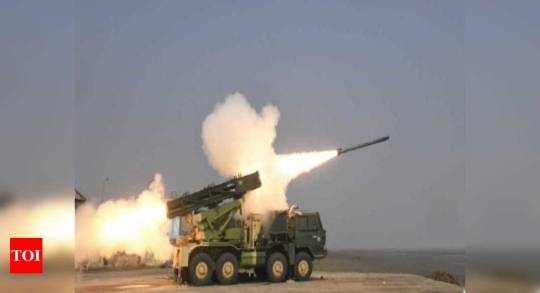
NEW DELHI: The indigenous Pinaka multi-launch artillery rocket system, with an enhanced strike range of 45-60 km, was successfully tested at the integrated test range at Chandipur off the coast of Odisha on Wednesday.
“A total of six rockets were launched in quick succession and the tests met all the mission objectives. Development of the enhanced Pinaka system was taken up to achieve longer range performance compared to the earlier design with reduced length,” said a DRDO official.
The defence ministry in August had inked contracts worth Rs 2,580 crore for six new regiments of the Pinaka rocket systems, which have an original strike range of 35 to 40-km.
The contracts were inked with defence PSU Bharat Earth Movers Ltd. (BEML) and private sector companies, Tata Power Company Ltd. (TPCL) and Larsen & Toubro (L&T), for the six new regiments. The six Pinaka Regiments comprise 114 Launchers with automated gun aiming and positioning system and 45 command posts to be procured from TPCL and L&T, along with 330 vehicles from BEML.
“These six Pinaka regiments will be operationalised along the northern and eastern borders of our country (with China), further enhancing the operation preparedness of our armed forces. Induction of these Pinaka regiments is planned to be completed by 2024,” said an MoD official. The DRDO on Wednesday said the enhanced version of the Pinaka will eventually replace the existing Pinaka Mark-I rockets, which are currently under production.
The post Desi rocket system Pinaka with 45-60km range clears the test appeared first on BreakingNews.
source https://bbcbreakingnews.com/2020/11/05/desi-rocket-system-pinaka-with-45-60km-range-clears-the-test/
0 notes
Text
PM Imran inaugurates long-awaited Peshawar BRT project.
Prime Minister Imran Khan inaugurated the long-awaited Peshawar Bus Rapid Transit (BRT) project today (Thursday). Addressing the inaugural ceremony, the premier said that this was “the best metro bus project in the country”.
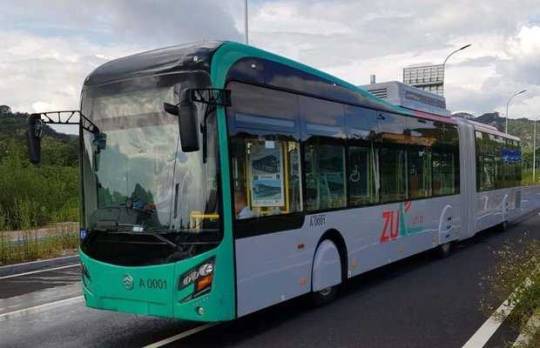
This will have an impact in Peshawar cause the city has one main artery that stretches from GT Road to Hayatabad, which chokes when under pressure, resulting in people sitting in traffic for hours which causes pollution and petrol wastage, he said.
He maintained that the main artery was 27 kilometres long while the feeder routes were 60km. “This means that all of the city will be connected,” he said, adding that it was a modern transport system covering Peshawar in its entirety.
The premier also admitted to having “reservations” about the project. “I want to say I had reservations about the project.
“Today, I want to pay tribute to Pervez Khattak because he always said that you will realise the importance of this project once it is completed. So all I want to say is that Pervez Khattak was right and we turned out to be wrong.”
The premier also said that the ticket prices for the Peshawar BRT were “just right”. “Our programmes should give priority to improving the lives of the common man. Everyone can afford the ticket which ranges from Rs10 to Rs50.”
There are also tickets for students to make travelling easier for them and hospitals have been connected so people will no longer face difficulties in this regard, he said.
He added that the project will eventually increase the per capita income in Peshawar and bring prosperity. “When you have a good transport system, it brings change.”
The project, built at a cost of Rs70 billion, is a 27.5 kilometre-long corridor track with 31 stations and seven feeder routes stretching 62km with 146 stops to facilitate thousands of passengers every day, according to Radio Pakistan.
Shortly after the inauguration, the premier, who was accompanied by Defence Minister Pervez Khattak, Khyber Pakhtunkhwa Chief Minister Mahmood Khan and other government officials, was given a briefing on the functioning of the project.
Earth Pakistan Property Portal
0 notes
Text
The North Korean Counter-Force Catalog
Or, What We Can Learn From Google Earth IMINT
The world once again finds itself on the brink of a North Korean crisis, and this time matters have come to a head - the DPRK has developed a capable solid-fueled ICBM and a tested thermonuclear warhead to place upon it. Theories have been overturned by the cold facts of capabilities, and now there is only a matter of months before these new weapons are fielded in significant numbers. The free world in general, and America in particular, now have very little time to weigh the consequences of action versus inaction.
Unfortunately, the academics and thinkers whom usually inform and enrich the public debate seem largely unable to grasp the nature and gravity of the current crisis, preferring retreat to the familiar bastion of Cold War era deterrence theory. As Crispin Rovere neatly summarized: "There are analysts discounting the possibility of war, but based on shallow reasoning: North Korea has nuclear weapons, nuclear war is unthinkable, therefore there will be no war." More and more frequently, the terrible specter of war is dismissed out of hand in the opening sentences of op-eds and think tank columns, as if ignoring the beast will compel it to leave. Recent rumblings from the Pentagon have made clear, however, that our military leaders cannot indulge these luxuries - they must confront the possibility, and thus the actual balance of capabilities that determine the outcome.
Unfortunately, public discussion is badly hindered because open-source information on the actual capabilities in play are painfully scarce. Even Barry R. Posen of the New York Times came up nearly empty, forced to extrapolate from published estimates of North Korean Transporter-Erector-Launcher (TEL) numbers and pragmatic worst-case assumptions (every TEL in its own hardened bunker) to work out the weapons required - and thus the scope of the military effort needed. Indeed, this dearth of information is so complete that Roger Cavazos's now well-known article debunking the myth of DPRK artillery leveling Seoul, "Mind the Gap Between Rhetoric and Reality," relied heavily on amateur Google Earth IMINT research done by an anonymous internet user known only as "Planeman!" And even this well is dry, the original internet discussion forum Planeman's work was hosted on having been shut down ages ago, and few others pursuing the same efforts. It's perhaps no surprise - at least one other talented amateur IMINT analyst received a job offer from Janes. (If you’re good at something, never do it for free, as they say.) Thus the public discussion of the potentials and perils of “the military option” in North Korea has been starved of information. The voting electorate are the final arbiters of power in American democracy, as they will eventually hold their congressional representatives - and their President - to account for whatever outcomes generated by their decisions now. This grants popular opinion great influence over events (and North Korea knows it,) yet those commentators seeking to sway the masses have almost no information or evidence to present them with.
Though unschooled and unworthy in the art of IMINT, I am an educated journalist, and can at least attempt the “footwork” to aid others. Fortunately, I can stand on the shoulders of giants in this effort - especially Jacob Bogle and his amazing work on “Access DPRK,” a colossal project to comprehensively map places and features in North Korea via free satellite imagery in Google Earth. Without Mr. Bogle's work - and all 53,722 Google Earth placemarks he generated - my efforts would be in vain. I also owe a debt to bookmarks compiled by “nkbypanda,” an anonymous amateur analyst, and even the original Google Earth .kmz bookmark file by “Planeman.” Building on their work, I've taken the next step and tried to classify hardened sites in North Korea, with an emphasis on identifying every hardened bunker or facility that might accommodate a TEL, in order to quantify the true scope of the challenge facing the Pentagon.
The Google Earth .kmz bookmarks file can be found here. Though still very much a work in progress, some general points of great significance are immediately apparent and are worth sharing now (especially with the ever-shorter timelines of potential crisis on the peninsula) and by publicizing I might invite the critique of the more informed.
Scope Of The Counter-Force Problem
Any preemptive strike on North Korea must assume worst-case scenarios - namely, that the regime will respond to any attack, no matter how limited, with full scale retaliation against Seoul, Tokyo and even the United States with a significant fraction of the weapons in their inventory, including conventional, chemical, biological and nuclear weapons. In other words, counter-force strike is the only feasible preemptive option. The conventional military balance on the peninsula being what it is, the equation is predominantly an “allied counter-force strike versus DPRK counter-value arsenal” problem. Even the oft-lamented artillery threat to Seoul is only notable when considered as delivery systems for chemical warheads.
Of the DPRK's known capabilities for delivering counter-value WMD attacks, three systems are predominant. In order of lethality, these are their SRBM arsenal, their 240mm Multiple Launch Rocket Systems, and their 170mm “Koksan” self-propelled heavy artillery guns.
This owes to several practical considerations. First, their solid-fueled, road-mobile IRBM and ICBM forces are still in their nascent phase, with their first successful tests conducted very recently, late last year at best, (in the case of the Pukkuksong-1.) Thus, at time of writing, North Korea simply hasn't had the time to produce and field them in significant numbers. This leaves their only operational MRBM the “Nodong,” a liquid-fueled weapon which is leashed to fixed bases and sizable support convoys, hindered by long (and fairly obvious) prep times, and above all is a 16 meter long weapon which makes it particularly ungainly to lug about the rugged North Korean terrain - especially on wheeled TELs.
The DPRK's SRBM arsenal (chiefly domestic variants of the 12-meter long, solid-fueled Scud) are far more mobile, compact, and quick to prep and launch. They can be dispersed faster, across more possible terrain, and hidden in more places for a longer time than the Nodong. Most crucially, their TELs - which determine how many they can fire at once - are available in numbers (published estimates vary widely, the median being 200 TEL vehicles or so.) Combined with their ability to deliver North Korea's first generation of fission weapons, (unlike MLRS or artillery,) the DPRK's Scud force is the most survivable counter-value asset they have, and - despite the bevy of land and sea based anti-missile systems now deployed to the ROK - the one most likely to survive in numbers sufficient to saturate defenses and strike Seoul. (Striking America or even Tokyo is unnecessary, as the potential devastation of even a single low-yield warhead striking Seoul proper is more than enough to constitute an effective deterrent - which is why North Korea still exists.)
Thus, quantifying the scope of the counter-force challenge depends on finding the Scuds, the MLRS, and the 170mm artillery. This is what I've found so far.
The Bunker Blitz - A Concerted Asset Dispersal Effort
The most telling insight so far has been a downright feverish effort by North Korea to build new reverse-slope bunkers, mostly near the DMZ opposite Seoul, beginning in 2009 but peaking between 2011 and 2013. Especially in the latter timeframe, new bunkers on reverse slopes appeared almost everywhere - the .kmz file has northwards of 300 so far. They come in three distinct styles, which I've dubbed “large,” “medium,” and “Koksan.” The lattermost one is distinctive, and sheds light on the goals of the entire reverse-slope building effort:
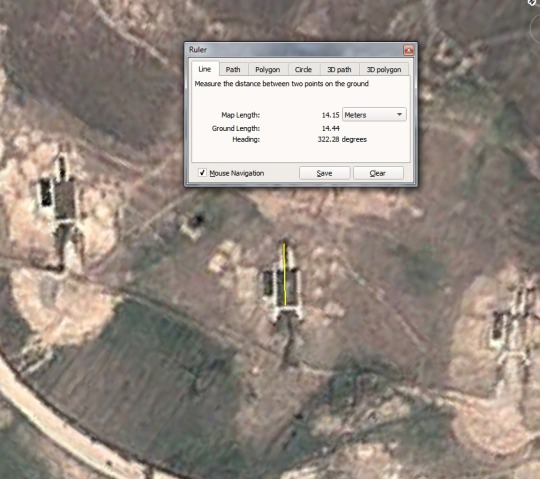
The curious shape, with its narrow room off the back, was ultimately explained by “nkbypanda's” past work, which provided a ground-level view of storage sheds for the 170mm Koksan gun and overhead imagery to reference. The presence of these storage sheds in close proximity - invariably with gun barrels visible, and occasionally an entire gun parked outside - confirmed the purpose of these bunkers. (The narrow room accommodates the long barrel of a Koksan gun.) They're almost always built in sets of six, with two sets placed as close together as terrain allows (for a full battalion of 12 guns.) The distinct shape of these bunkers (visible in post-construction surface scarring) and presence of Koksan gun sheds allows identification even when imagery of the construction phase is poorly lit, poorly timed, or even nonexistent. So far I've found nine Koksan battalions (about half within 60km of Seoul's center) and a few half-battalion (6 gun) or single-battery (4 gun) dispersal sites for use in wartime (no unit permanently stationed there.)
In addition to being direct evidence of very scarce reports and anecdotal evidence concerning reverse-slope basing of 170mm Koksan guns, this casts other bunker-building efforts in the same timeframe in a decisively offensive light. Half the battalions so far discovered are more than 60km from Seoul's city center (the maximum theoretical range of the Koksan if using Rocket Assisted Projectiles.) They are, however, well-positioned for deep fire on the Chorwon invasion corridor (see page 11.) This makes their other bunkers more suspicious - despite being much closer to the DMZ (and thus more vulnerable) than required to range Seoul, such aggressive forward basing also maximizes penetration chances (steeper, faster re-entry trajectories to avoid ABM defense) and their reach into the southern ROK. In other words, they’re not sited for strictly counter-value employment.
If Pyongyang harbors hopes of forceful unification still (after precluding American involvement with threats of ICBM strikes on American soil,) then they'll need the asymmetric advantage of WMD-equipped ballistic missiles to overcome the conventional forces imbalance on the peninsula, especially to strike more distant ROK bases, transportation chokepoints and other military targets. (The DPRKs recent pursuit of long-range precision conventional fires such as the KN-09 300mm MLRS, and local Tochka derivative, the KN-02 - both of which are rumored to have optical scene-matching terminal guidance - lends strength to this suspicion. If Pyongyang's motives are strictly self-defense deterrence, then pouring scarce money into new precision capabilities instead of more mature, legacy counter-value systems capable of carrying the DPRK's heavy first-gen fission weapons makes little sense.) With nuclear warheads, even Scuds are tactically and operationally relevant weapons, not just counter-value assets - which suggests that at least some of the new bunkers, outside of the 136 Koksan bunkers so far identified are meant for dispersal of Scud TELs.
Which Bunkers Hold What?
Discovering where TELs might be is easiest to do by ruling out where they can't be - i.e. where they cannot fit, or cannot access. The dimensions of bunkers are an obvious starting point.
Outside the Koksan bunkers, two other types predominate - a “medium” bunker (measuring roughly four and a half to five meters wide, and thirteen to fourteen meters long,) and a “large” bunker with a six or seven meter width and a 17 to 18 meter length. Even with many bunkers floor plans open and visible during construction, solid measurements are a bit difficult due to various factors - slant angle distortion, shadows hiding the bases of walls, and above all the half-meter resolution of the free DigitalGlobe imagery that predominates in the Google Earth database. When considering the impact of interior wall thickness on overall internal dimensions, the resolution limits impose obvious problems in calculations. The figures given are an overall guesstimate produced over the course of identifying, measuring and cataloging many bunkers.
Can a North Korean Scud TEL fit in these? That depends on the TEL, which complicates matters because various TELs have been shown off in DPRK parades, owing to their need to import and improvise with whatever they can spirit past the sanctions. The length of a Scud missile puts a hard limit on length, however - 12 meters. And a great number of their extant Soviet-delivered stock (as displayed in parades) are likely the Maz-543, which gives us a width. Determining a turn radius required some hunting, but a variety of sources confirmed 15 meters as a reasonable approximation. (Interestingly, half that of the American HEMTT owing to the unique two-axle articulation.) Thus informed, one can analyze road access:
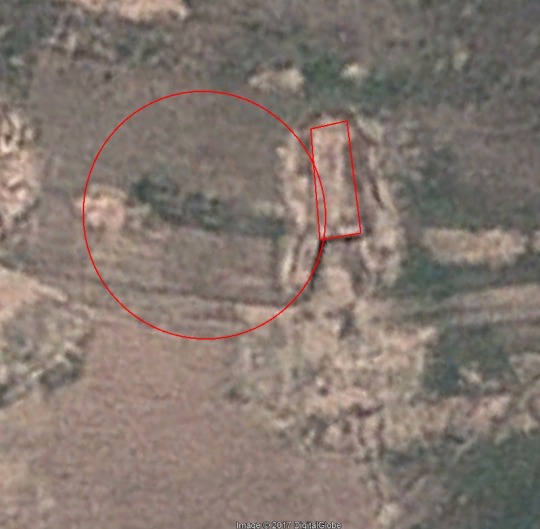
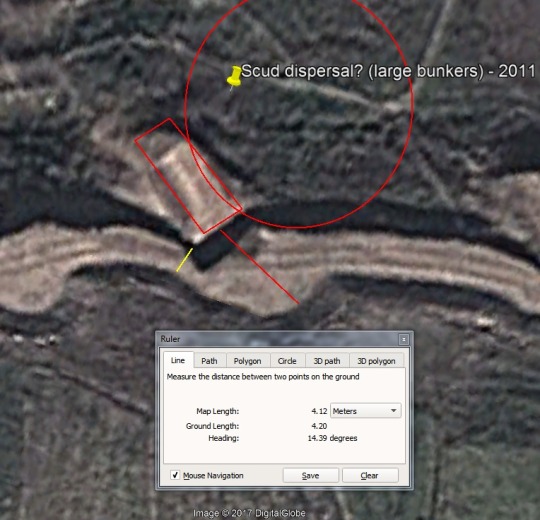
Once one begins sliding around a to-scale rectangle of cardboard around their screen making motor sounds with their mouth, the lesser glamour associated with the IMINT disciplines becomes apparent. Nonetheless, it's effective, and once practicalities are accounted for (such as room to open vehicle doors, and the icy nature of severe Korean winters) certain conclusions become more or less probable. As usual, there's always another wrinkle, such as North Korea's recently revealed tracked Scud TEL, but given the presumption of a mostly wheeled legacy fleet, broad conclusions can still be drawn.
Observing Patterns and Environs
Overall, some patterns emerged:
Every “medium bunker” site had road access that could accommodate a MAZ-543 TEL (though some were tight fits.)
“Large bunker” sites invariably had good road access, but not always sized to comfortably accommodate a MAZ-543's 3.06m wide TEL, even when it would've been easy to do so (see second image above.)
“Medium bunkers” are often associated with large, vehicle-capable tunnels (with widths, slopes and turn radii that can accommodate a MAZ-543 TEL) boring into presumed large garages or bases beneath hills or even mountains, facilities that the oldest imagery shows predates the 2009-2013 construction blitz.
“Large bunkers” are often associated with large nearby military bases with a preponderance of barracks, usually favor areas with flatter, wider-open terrain and are more often found very close to the DMZ (as little as four kilometers on occasion.)
This may imply:
The “medium bunkers” are dispersal bunkers for wheeled TELs, and perhaps for 240mm MLRS, which can be difficult to conclusively separate from the HARTs built for the latter system (predominantly distinguished by presence of firing revetments and shrapnel-shield dirt mounts in front of the entrances, as seen here.)
The “large bunkers” are meant for housing APCs, IFVs and supply vehicles for forward-positioned troops who might be called upon to drive on Seoul in event of war.
There's many caveats to these conclusions - the “medium” bunkers would accommodate a pair of 240mm MLRS (with room for reloads and accommodation for the crew as well) much more comfortably than a MAZ-543 (which can just about squeeze in with room for the driver to wiggle out,) to say nothing of the road access at some sites as well. Additionally, the “large” bunkers, aside from being a more comfortable fit, could provide room for extended crew accommodation (cots, stove, basic maintenance equipment, etc.) which would be of obvious use when TELs are dispersed in times of high tension - which may last indefinitely. Given the well known and longstanding concentration of American ISR capabilities near the DMZ, moving TELs around is something the KPA will try to avoid.
However, the preponderance of evidence seen across multiple sites impels me towards the above conclusions - especially in light of what the sudden bunker-building effort implies.
Deliberate Dispersal of High-Value Assets Away From Legacy Bases
Tangible information on the famous North Korean Hardened Artillery Shelter - outside of a single Nautilus publication from the late 80s and the occasional KCNA propaganda clip - is hard to come by. Looking at the sites themselves, however, reveals a multitude of types with varying protection - and that HARTs for self-propelled guns, including the Koksan, never provided overhead protection for guns while they were actually firing. Indeed, some of the new Koksan bunker sites were built at already-extant Koksan battalion bases, with the gun sheds visible pre-2009 and the old firing revetments nearby still visible today. The bunker-building is almost certainly a reaction to the drastic shift in artillery effectiveness enabled by modern computer fire control and fast proliferation of cheap GPS guided shells with impressive accuracy, which render revetment protection mostly useless.
This strongly implies the other bunkers were also built as intelligent adaptations to changing ROK/US capabilities as well. Almost no information is available on North Korean missile bases (outside of a handful of badly outdated anecdotes from defectors and vague military press releases,) leaving us with naught but ludicrous claims of missile bases deeper than 1,000 feet (despite defector's testimony about the DPRK's inability to deal with the water table) that are nigh impregnable to all attack. Impregnable though the bunker may be, the exits are not so blessed:

As long as the bunker-busting bomb goes off on the right side of the blast door, the occupants will be unharmed (the image illustrates how the GBU-57 MOP subverts the bunker-builder's expectations in dramatic fashion.) But intact or not, a few tons of rock in your tunnel entrance complicates vehicular traffic some. A TEL that cannot sortie is a TEL that cannot fire. If DPRK missile bases are indeed buried deep under mountains, the last decade of rapid advances in precision standoff guidance weaponry and ever-more advanced and effective bunker-busting warhead design can be expected to compel rapid KPA efforts away from these newly vulnerable bottlenecks.
Indeed, this seems to be the case. The facility I dubbed the “Kaesong Missile Base” features three generously-sized tunnels that lead under a sizable hill, and in historical imagery a 16-meter long vehicle is visible - almost certainly a Nodong missile on its TEL. Though the number of recently-dug bunkers in close proximity to this base are far more vulnerable than the under-mountain base, each must be attacked individually - a far higher burden on any would-be attacker than simply sealing every missile underground by hitting just three tunnel entrances. Given the short distances of the entire Korean theater, and conventional Allied military strength, by the time base occupants dig themselves out, they'll be in occupied territory. Thus the mass of the first retaliatory salvo is paramount. In light of modern weapons, this strongly favors dispersal of SRBM assets.
In light of this logic and the frequent observed association of pre-existing, TEL-accessible bases beneath hills and the “medium” sized bunkers, I find it highly plausible they're meant for dispersing SRBM launchers.
Conclusions
This document is informative; detailing the research and rationale that underlie the guesses offered within the .kmz file itself. I advance no argument from this data as-is, especially as the research is incomplete (in MLRS HARTs and hardened airbase facilities especially) and I must expose it to the criticism of the more experienced and informed before trusting it with such weight. However, a few simple conclusions are self-evident:
The DPRK is an alert, adaptive and responsive enemy who is keenly aware of allied counter-force abilities. The enemy is never idle.
From their decision to keep investing great money and effort into dispersal bunkers, despite concurrent investments in TEL mobility and the obviousness of construction efforts (for instance, amateurs can easily find them on Google Earth's low-res imagery) one may conclude they rate their chances of evading modern ROK/US ISTAR assets in a compact and terrain-constrained theater to be too low to ensure force survival alone.
Once the tracked TELs revealed this year are put into mass production, the counter-force targets will go from two-hundred odd wheeled SRBM TELs to more mobile, nimble and survivable TELs - and their already-mobile Scuds will be an order of magnitude more elusive.
In sum: time is short.
Commentary and questions best directed to my twitter, or use the anonymous “ask” box on this blog.
7 notes
·
View notes
Photo

Silence is golden for whales as lockdown reduces ocean noise
Curtailing of shipping due to coronavirus allows scientists to study effects of quieter oceans on marine wildlife
Karen McVeigh
Mon 27 Apr 2020
In cities, human lockdowns during the coronavirus pandemic have offered some respite to the natural world, with clear skies and the return of wildlife to waterways. Now evidence of a drop in underwater noise pollution has led experts to predict the crisis may also be good news for whales and other sea mammals.
Researchers examining real-time underwater sound signals from seabed observatories run by Ocean Networks Canada near the port of Vancouver found a significant drop in low-frequency sound associated with ships.
David Barclay, assistant professor of oceanography at Dalhousie University, the co-author of a paper reviewing the phenomena, examined sound power – a way of measuring “loudness” – in the 100 Hz range from two sites, one inland and one farther offshore. He found a significant drop in noise from both.
“Generally, we know underwater noise at this frequency has effects on marine mammals,” Barclay said. The findings of Barclay and his researchers were first published in The Narwhal.
“There has been a consistent drop in noise since 1 January, which has amounted to a change of four or five decibels in the period up to 1 April,” he said. Economic data from the port showed a drop of around 20% in exports and imports over the same period, he said.
The deep ocean site, around 60km from the shipping lanes and in 3,000 metres of water, also showed a drop in average weekly noise of 1.5 decibels, or around a 15% decrease in power, Barclay said. “This gives us an idea of the scale over which this reduction in noise can be observed.”
The reduction in ship traffic in the ocean, which Barclay compares to a “giant human experiment”, has had scientists racing to find out the effect on marine life.
“We are facing a moment of truth,” said Michelle Fournet, a marine acoustician at Cornell University, who studies humpback whales in south-east Alaska. “We have an opportunity to listen – and that opportunity to listen will not appear again in our lifetime.”
This opportunity to listen will not appear again in our lifetime
Following the terrorist attacks of 9/11, when ship and air traffic fell in North America, US researchers were similarly able to study whales in a quieter ocean, with a landmark studyconcluding that ship noise was associated with chronic stress in baleen whales.
“We have a generation of humpbacks that have never known a quiet ocean,” said Fournet, whose work has shown that the whales alter their calling behaviour in response to a noisy ocean.
Late April usually marks the beginning of the cruise ship season in south-east Alaska, with the boats docking at Vancouver before heading north. This year the health crisis has halted them.
“What we know about whales in south-east Alaska is that when it gets noisy they call less, and when boats go by they call less,” said Fournet.
“I expect what we might see is an opportunity for whales to have more conversation and to have more complex conversation.”
Ocean scientists worldwide, many of whom are unable to carry out practical work due to the pandemic, are desperate to collect data from this once-in-a lifetime opportunity to listen.
Nathan Merchant, a bioacoustics expert at the UK government’s Centre for Environment, Fisheries and Aquaculture Science (Cefas) in Lowestoft, said: “We are on tenterhooks waiting to see what our records are saying.”
Cefas has hydrophones to collect noise date on four sites: two in the North Sea, one in Plymouth and one near Bangor.
Merchant said there have been international efforts to coordinate the work of monitoring underwater noise.
“We will be looking at how the coronavirus is affecting underwater noise throughout Europe, so this work out of Canada will be the first of many,” he said.
He and his colleagues have long been discussing how they could ever conduct an experiment to make the ocean quieter, in order to find out what benefit it would have.
“We have this natural experiment going on. Of course it is a terrible crisis, but we may as well get on and look at the data, to find out what effect it is having.”
0 notes